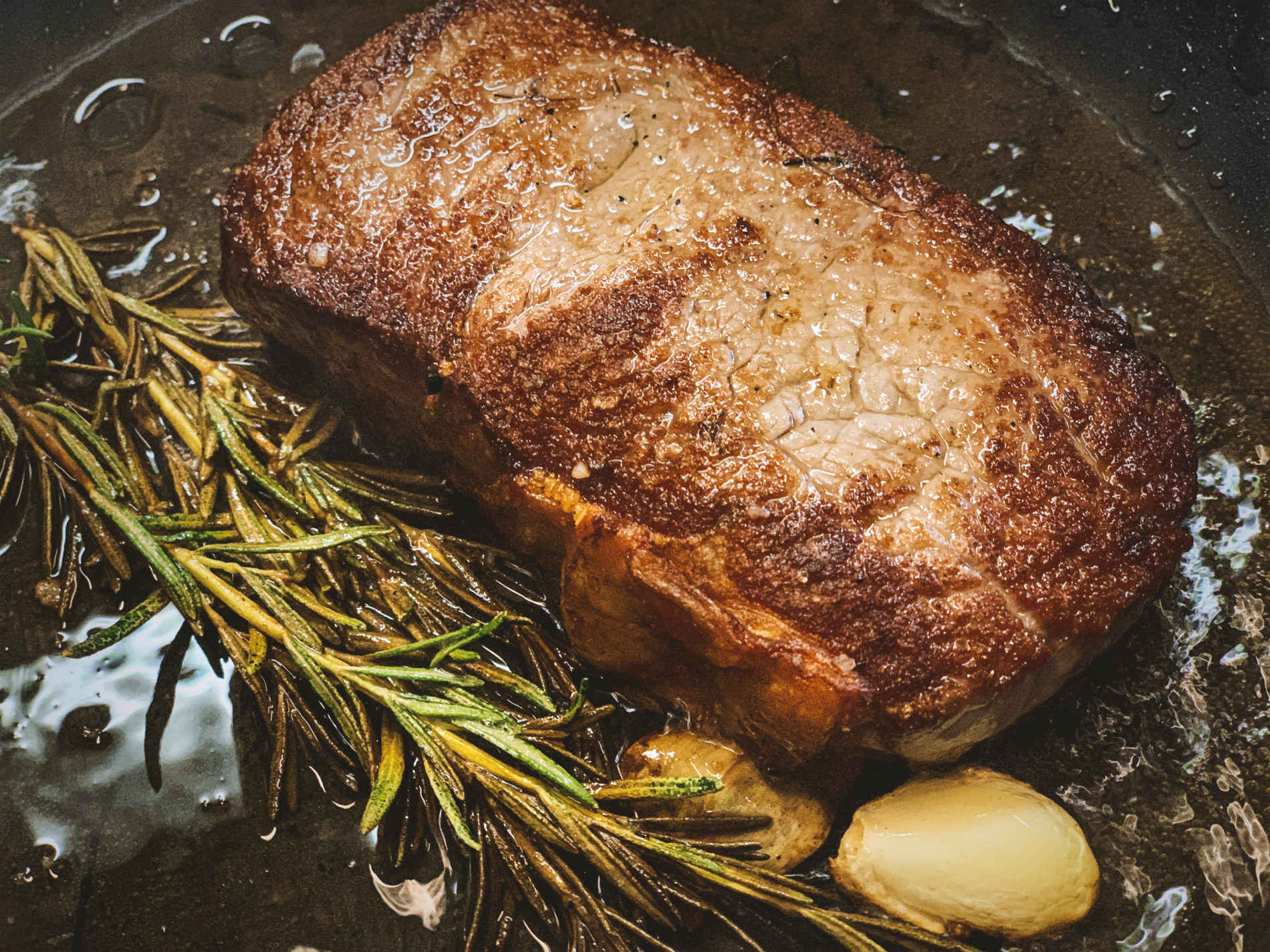Dry ageing is the thing! But you can’t just throw a couple of steaks in the fridge, wait and hope to get the right flavour – air and bacteria can (and will!) mess it up a little, and you’ll get a massive odour instead. Basically, there are two types of ageing meat – wet and dry. Both of them are supposed to work on the muscles, tenderizing them and creating a new flavour profile (though wet ageing has minimal impact on the taste of the meat). How’s that working? In a nutshell: right after the muscle becomes meat, it’s still quite tough. It’s said to be in rigor mortis state. That is the time when the whole carcass is really stiff – the worst moment to eat a piece of meat.
It takes some time to relax – that’s when enzymes in the meat start softening it, transforming the matter: connective tissue is slowly degrading, leading to more tender meat, proteins are being broken down to amino acids, moisture is evaporating, the flavour is building up creating new compounds, known as glutamates, the source of umami taste. Intensifying the flavour is what it’s all about.
The thing is that the regular meat more often than not doesn’t spend much time hanging in special refrigeration units, i.e. dry ageing, that is, it’s not matured flavourwise. Producers usually won’t let it, because it’s too expensive to let the meat hang for 30-75 days. But sometimes meat will stay in a special chamber under controlled conditions of temperature and moisture. That’s when real ageing starts kicking in. The longer it stays there, the more complex it becomes. If you try such meat you’re promised to recognize nutty, gamey, cheese, mushroomy, earthy flavours. Ageing works really well with beef because pork is more susceptible to going rancid.
Dry ageing can surely be called controlled rotting: you are dealing with bacteria, oxygen, enzymes and moulds – one wrong step and you’re into a danger zone. Calling it easy would be an unreasoned and premature (pun intended) statement. That’s why it’s better when it’s made by professionals in dry ageing lockers.
You might want to ask “hey, what about dry ageing single steaks at home?”. Well, don’t bother. All these instructions a la “wrap the steak in a single layer of waxed paper and refrigerate for 24/48/72-/6 hours” are just not working. This method simply dehydrates the meat, not dry ageing it. Beef needs two to three weeks – all this time is needed for the enzymes to do their work to tenderize the fibres and to create a more complex flavour. To get things done at home, you’ll need a much bigger chunk of prime rib or sirloin, a proper ageing chamber, controlled airflow and humidity. Are you really into that? If yes, we recommend finding some proper guides for home cooks with detailed step-by-step explanations. If not, just try to Google “steakhouses near me” and read online if some of them are into dry ageing business.











What do you think?